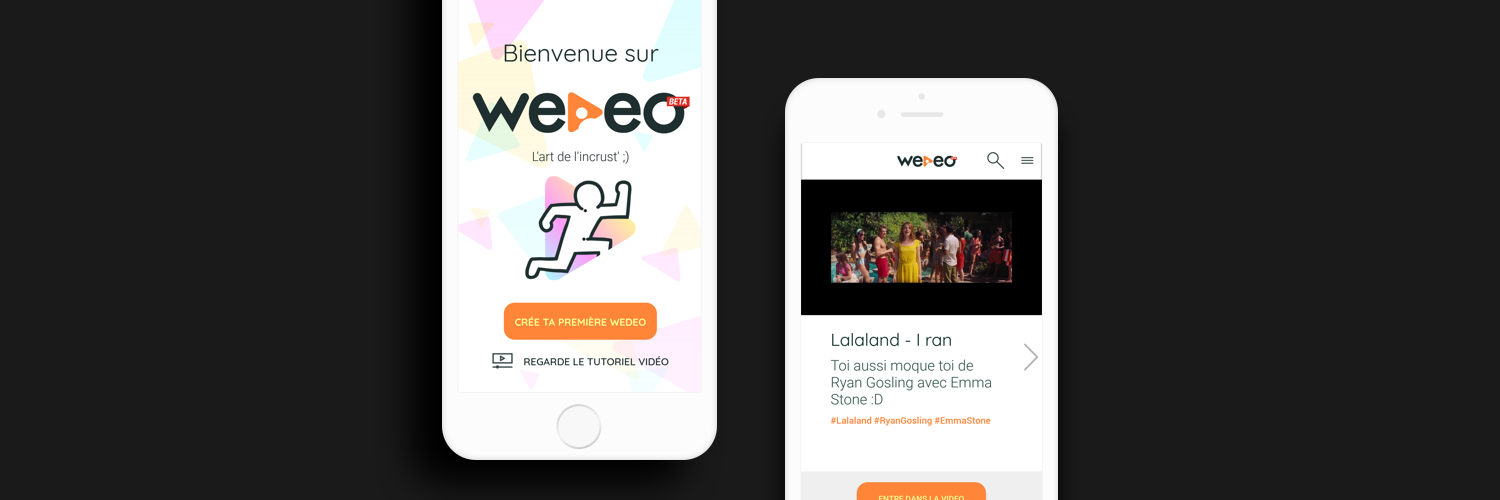
CONTEXT
In 2016, we received Invidam’s specification to develop the Wedeo product. Surfing on the social video wave and real-time video, Philippe Beliaeff wanted to compete with Snapchat by bringing a new angle around the personal video. Indeed, the idea is to stage the user by allowing them to embed themselves in known videos.
Here is the result:
OUR APPROACH
Invidam initially had a C ++ SDK designed to extract an element from a video. Our purpose was to go even further by working on this innovative technology to achieve a high traction power. Technical complexity? Doubt of realization? This is exactly what excites us the most. Challenge accepted. Our teams were very motivated to approach this theme especially after the success of the Tizr app that we had developed here.
The first step was to analyze and understand the current situation. By its object orientation, C ++ was chosen to be uploaded to any mobile app. However, the integration of this module greatly increased the binary output. In addition, the video extraction computation time was directly related to the phone calculation power. These 2 points clearly frustrate the user’s experience.
The strategic axes around which we wanted to progress were:
- Reducing the app weight
- Increasing the computing performance
- Promoting the virality of the videos created
When reducing the app weight, the challenge was to simultaneously enable the product to be autonomous (no dependency on other libraries). It was therefore necessary to identify the external libraries used, develop and integrate them into the binary. This choice increased the product performance. However, the following two issues persisted: the app weight and the calculation performance.
The choice was therefore made to deport the entire calculation algorithm on a cloud infrastructure in order to take advantage of the available systems’ power and scalability.
Remains to integrate certain elements in order to allow users to share their videos. The first issue is connectivity: by embedding the Facebook connection SDK, users can register by one click and especially share posts easily on their social profiles. Moreover, each video produced can be broadcast on Twitter, sent to other contacts by message or broadcast on YouTube.
PRIMARY RESULTS
Due to the work previously achieved, the mobile app binary does not exceed 40Mb. This weight is considered very low given the technical complexity of the product. The second rewarding result is the calculation time. When it takes more than 3 minutes of calculation on a single-line phone, it takes only 15 seconds on any phone!
Our teams were delighted to develop this product. Results come to comfort and reward all the efforts made.

